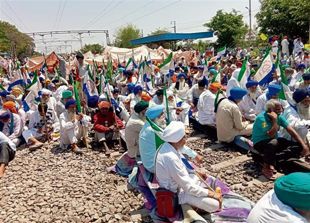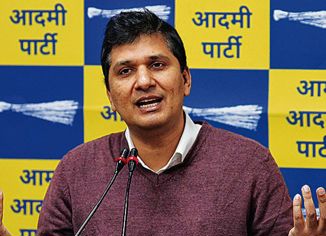
Red alert: If the present trend continues, India will become the highest unequal nation.
Janak Raj Gupta
Reports keep coming that India is heading towards one of the most unequal nations. A recent international study on income distribution, conducted on behalf of the World Inequality Lab, has observed that economic inequality is widespread in India and has been growing since 1980. It says that “income inequality in India has reached historically high levels, as the top 0.1 per cent of earners have captured more growth than all of those in the bottom 50 per cent combined”. At a recent event in New Delhi, Nobel Laureate Paul Krugman remarked that India had made “extraordinary” economic progress, but “inequality” remains an issue”.
Another IMF study on causes and consequences of income inequality has shown that policy makers should focus on the poor and the lower middle class. “Specifically, if the income share of the top 20 per cent increases, GDP growth actually declines, suggesting that the benefits do not trickle down. In contrast, an increase in the income share of bottom 20 per cent is associated with higher GDP.” The poor and the lower middle class have high marginal propensity to consume. This should have a multiplier effect on total demand. It is only billionaires and millionaires who resort to ostentatious consumption which has zero or negative externalities.
India will soon achieve the status of the fastest growing nation. But if the present trend of income distribution continues, it will be the highest unequal nation too. According to the World Wealth Report, India has become the largest population of millionaires and the growth in their number has become the largest in the world. Oxfam India’s recent report has shown that the wealth of India’s richest 1 per cent increased by over Rs 20.9 lakh crore during 2017 — an amount equivalent to the total Budget of the Centre in 2017-18.
Since 1991 we have been depending on the market forces which have led to over 7-8%, and sometimes, even 10% growth. The big assumption is that the markets are the true guides to decide what, where and how much to produce. They incentivise private investment and hence promote economic growth. The increase in investment is expected to increase employment and income, making benefits of growth trickle down, covering all sections of society. But this theory now stands rejected. What we actually experienced was the increase in distributional inequalities. Earlier, we had a few corporate houses like Birla and Tata. Now, we have a large number of millionaires and billionaires. With the PPP mode of production, there is a possibility that this number will further multiply. Recently, FM Arun Jaitley admitted that “if you look at the largest companies today, compare it with the list of companies which existed prior to 1991”.
Based on this, it may not be concluded that India should do away with market-led growth model. If it is to achieve some key position in the world economy, we should streamline the market forces by ushering in more economic reforms. But unlike China, we should not depend on external economies at the cost of domestic economy. However, a market-led growth model is bound to lead to concentration of wealth. Unless corrective measures in the form of progressive taxation and income transfers are ensured, there is bound to be a widening gulf between the rich and the poor, which will threaten inclusive growth. Ground realities, however, show that the present government is continuing with the unrestrained market-led growth model favouring the rich. This will have serious implications for ensuring inclusive growth and equitable distribution of income.
The time series data released by the Central Board of Direct Taxes shows that the proportion of direct taxes (a great income equaliser) in the total tax revenue has decreased from 61% to 51%. Wealth tax stands abolished. Corporation tax is scheduled to be reduced to 25% from 30%. Therefore, there is an urgent need to reimpose inheritance tax, or estate duty, which was abolished when there were a few rich. As the number of billionaires has increased, they bequeath huge properties to their legal heirs. This property is unearned and any tax on such property will not adversely affect their incentives to work, save and invest. Any tax on unearned income, like capital gains tax or property/wealth tax, is conducive insofar as willingness to work, save and invest is concerned. Apart from taxes, resources from the rich can be collected in the form of tax-saving instruments carrying a nominal rate of interest. Also, the government needs to stop non-merit subsidies to the well-off.
For the direct benefit transfer (DBT) approach, which the government has adopted for distributing subsidies, cash transfers should be conditional, requiring a specific socially desirable action on the part of beneficiaries, like increase in school attendance and skill formation. We need to evolve a new strategy of development depending on our strengths and weaknesses. We should ape the West. Traditionally, we consider four factors of production viz. land, labour, capital and enterprise. Land has become a critical source to generating inequalities. So has unskilled labour. Capital is the main source of unequal distribution of income. Enterprises in the form of startups can be great income equalisers. Thus, India needs to develop a knowledge economy.
Though we have to depend on the market-led model for growth, to make it inclusive and hence sustainable, we must also ensure fiscal transfers from the rich to the poor. Apart from collecting resources from the rich, some voluntary element may be introduced. If a mechanism is found to contribute a small proportion of increase in the value of private property as donations, much scarcity of resources for social sectors can be removed. Lest the volcano of inequality explodes, the poor and the have-nots must be assured a decent level of disposable income to spend on merit goods like education, medical facilities, buying insurance policy and other social security measures, which in a welfare state should be government obligation.
The writer is a former Professor of Economics, Punjabi University



























